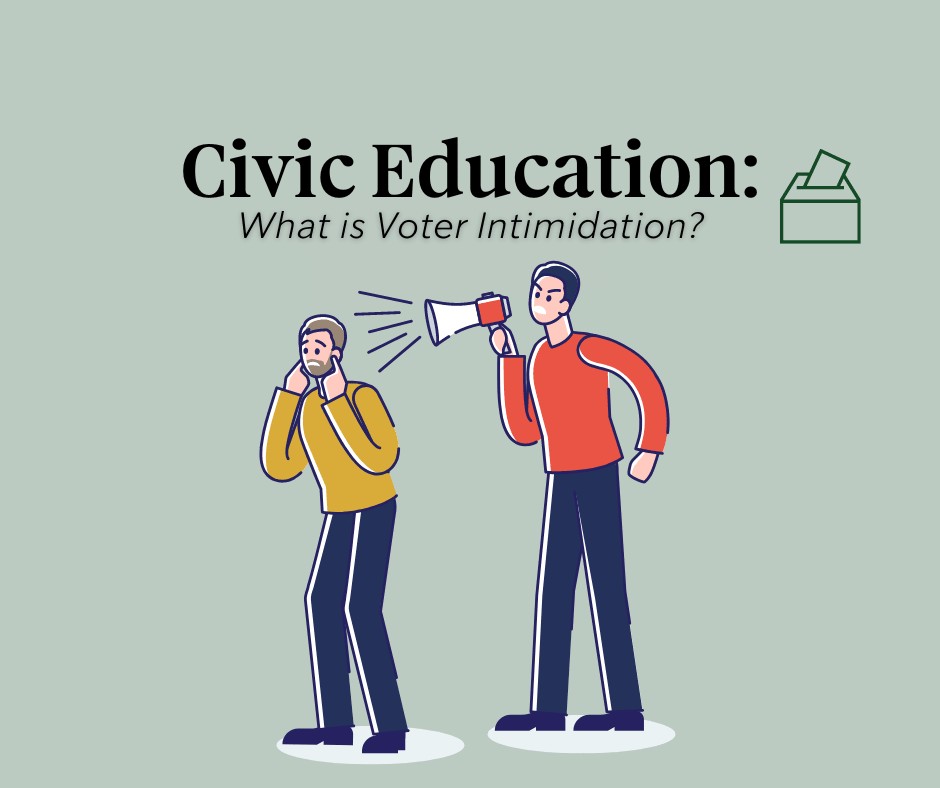
What to Do if You Experience Voter Intimidation at a Ballot Drop Box
Are you concerned about experiencing voter intimidation at the polls this year?
What is voter intimidation?
- Voter intimidation happens when someone attempts to interfere with anyone else’s fundamental right to vote with aggressive behavior towards the voter as they attempt to vote, falsely presenting oneself as an elections official, spreading false information about voter requirements, displaying misleading signs at the voting center, and more.
- Frequently, voter intimidation, on top of harassment and hostility, is pointed toward non-English speakers and voters of color.
What can you do?
- It’s essential to know your rights as a voter. Voter intimidation is a federal crime, and your right to vote is legally protected. As stated in 18 U.S. Code Section 594:
“Whoever intimidates, threatens, coerces, or attempts to intimidate, threaten or coerce, any other person for the purpose of interfering with the right of such other person to vote or to vote as he may choose, or of causing such other person to vote for, or not to vote for, any candidate…shall be fined under this title or imprisoned not more than one year, or both.”
- Exercising your fundamental right to vote should be easy. It's important to speak up if something, or someone, is impeding the process. If you think you’re a victim of or witnessing voter intimidation, call the Election Protection Hotline at 866-OUR-VOTE (866-687-8683) to receive help from a trained election protection volunteer.
- Anything suspicious should be reported to your local election official immediately. You can find your state or local election office’s website here.
- It is crucial to document the encounter, whether you are experiencing it or witnessing it, so it can be reported to the local County Board of Elections and County District Attorney. Be sure to note the incident's date, time, and location. The County Commission is required to investigate alleged voter intimidation and report it to the District Attorney, who then has the authority to prosecute the violation.
- Safety is of the utmost importance, so it is vital not to confront the challenger, as they could be armed.
- Knowing the differences and similarities between poll watching and voter intimidation is also important. While election observers and poll watchers can be nonpartisan and credible, it has been used to intimidate voters and illegally sway elections. Rooted in Jim Crow, poll watchers historically attempted to stop Black Americans from exercising their right to vote. Most states specify legal qualifications and regulations for partisan poll watchers, which you can learn about here. Nevertheless, credible, nonpartisan observers play an important role in elections — you can discover more about observers here.
More resources
- The Institute for Constitutional Advocacy and Protection at Georgetown University Law Center has fact sheets for all 50 states diving into the laws barring unauthorized private militia groups and what action to take if these groups arrive at a polling or voter registration place. You can find all of the fact sheets here.
- The Brennan Center for Justice created a resource explaining the limits on government and private actors when it comes to interfering at the polls, which may be helpful to know if you need to call 911. Find the info here.
- The ACLU’s voter intimidation guide offers information on reporting, poll monitoring, assistance for non-English speaking voters, and more.
Are you concerned about experiencing voter intimidation at the polls this year?